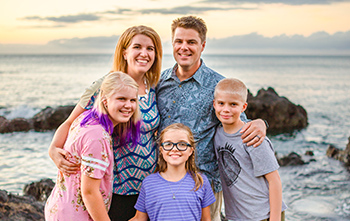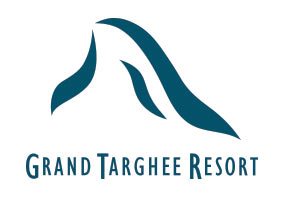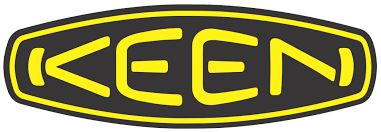.jpg) I’ve put off this post for months. I think every time I post a “How Much Does It Cost to Live in an Airstream” I mention that the numbers don’t include EVERYTHING, just what is unique to our particular lifestyle. There really is another side to that coin, however, that includes long term planning like college funds, retirement, insurance and other life necessities that are more personal. To give you a better idea of how we make our travels work financially, I thought I’d break down the rest of our numbers and give you an idea of how we budget our money. Sound good? Okay, hold on because my brain thinks in complicated ways.
I’ve put off this post for months. I think every time I post a “How Much Does It Cost to Live in an Airstream” I mention that the numbers don’t include EVERYTHING, just what is unique to our particular lifestyle. There really is another side to that coin, however, that includes long term planning like college funds, retirement, insurance and other life necessities that are more personal. To give you a better idea of how we make our travels work financially, I thought I’d break down the rest of our numbers and give you an idea of how we budget our money. Sound good? Okay, hold on because my brain thinks in complicated ways.
Two Types of Spending
For me, there are two different categories of spending: fixed and variable. Fixed spending is anything that is the same dollar amount every month, while variable spending varies from month to month. Simple enough.
Examples of fixed spending include: life/ health/car/dental insurance, HSA contributions, cell phone bill, church contributions, truck & Airstream loans.
Examples of variable spending: camping fees, groceries, dining out, clothing, propane, gas, entertainment, and laundry.
The reason these are “variable” is that they are not a fixed number. Some months we spend more on groceries, some less. Anything I don’t know an exact amount for falls into this category.
Do the Math
Once I figured out what fell into the two categories I did a little math. I took our paycheck and subtracted the total fixed spending amount, which provided me with how much we had “leftover” after the bills were paid for our variable categories.
Paycheck – Fixed Spending = Variable Spending
The best part of thinking like this, was that I no longer had to worry about the fixed spending amounts. They never changed. The only numbers I have to think about on a monthly basis are the smaller variable spending amounts.
Ballpark Your Spending for Larger Variable Categories
Once I had a number for my variable budget, it was time to divide it up. Just because our spending changed every month, didn’t mean that I shouldn’t have a specific number to shoot for in my various categories. I can’t just take a budget of $3,000 and choose randomly where to spend it, otherwise we wouldn’t be able to eat because I’d spend it all on clothes (not really, but you get the idea).
I picked the 4 most regular categories and gave those a number:
Camping Fees: $970.00/month
Gas: $700.00/month
Groceries & Household Items for Family of 5: $700/month
Propane: $50/month
Since I didn’t know exactly where to start with these numbers (Camping Fees started out at $1200 when we first started out), I picked something I felt was in the ballpark and have adjusted the amount as I’ve received more data over the months.
Find Out What is Leftover
Since those aren’t the only things we spend money on every month (you might have noticed our rather large dining out category every month) I still needed to figure out what we had left to spend on everything else.
To figure out what I had left, I did a little more math:
Variable Spending Amount (from previous equation) – Camping Fees – Gas – Groceries – Propane = Discretionary Budget.
This is where I finally felt like a genius. Why does it matter WHAT I spend my money on as long as I don’t go over my allotted amount? Right? Maybe one month we are in Portland and want to stuff our faces, and the next month we need to buy everyone new clothes and eat at home every night?
So my “Discretionary Budget” includes everything else: clothes, dining out, hair cuts, entertainment, laundry, small home improvement projects, etc.
I originally broke this budget down even farther so I had a weekly allotted amount, but once again I had trouble sticking to it. Some weeks we don’t spend anything because we are out in the middle of nowhere, and others we just spend a lot. Once I switched to a general monthly amount things went a lot smoother.
Save What You Don’t Spend
Since our variable costs, well, vary there can be months where we spend a lot, or months where we spend very little. The winter months in the southwestern US (Arizona, New Mexico, Nevada) are usually very low on camping fees. We dry camp a lot, or stay in low cost state & national park campgrounds. In contrast, December 2015 we are planning on staying in the Florida Keys. Turns out that’s REALLY expensive. Any month we have leftover in our budget during the slower months, I transfer from our checking account into our savings account and pull out again when needed to make up the difference.
It’s not a perfect system, but my brain can wrap itself around the numbers and generally keep us on track month after month. Later this month I’ll post about the budgeting app I found (and LOVE) that helps me stay in the green so stay tuned for that!
Image Credit: 401kcalculator.org



















Very interesting stuff. I treat mine in a similar way. We have a fixed and flexible. But we always pay ourselves first and save a portion of our income. I treat our savings as a fixed monthly cost.
We’ve used a 40/35/25 formula I came up with. We save 40% of our income. 35% is fixed costs and 25% is flexible spending from month to month. We roll over our flexible if we don’t spend it all. And adhere to a strict policy of don’t spend more than we earn.
We’re excited to see how this will adjust when we are on the road as our fixed costs should reduce greatly.
Thanks Mike!! We too have a portion of our fixed monthly cost that goes to savings (I guess I didn’t spell that out) but most of it goes to A) the car fund B) our Whole Life Insurance Plan or C) the HSA account. Now I’m curious what % it actually is as I like those numbers!
Makes sense to me! Thanks for this! helps me plan a bit better!
[…] few weeks ago I posted about how we set up our budget. This week I’m going to share how I keep track of everything once it has been […]
[…] Standard disclaimer that this is not ALL the money we spent for these months. Not even all our discretionary shopping – just the categories I feel that people would find most interesting. To learn how I work my budget see this post. […]